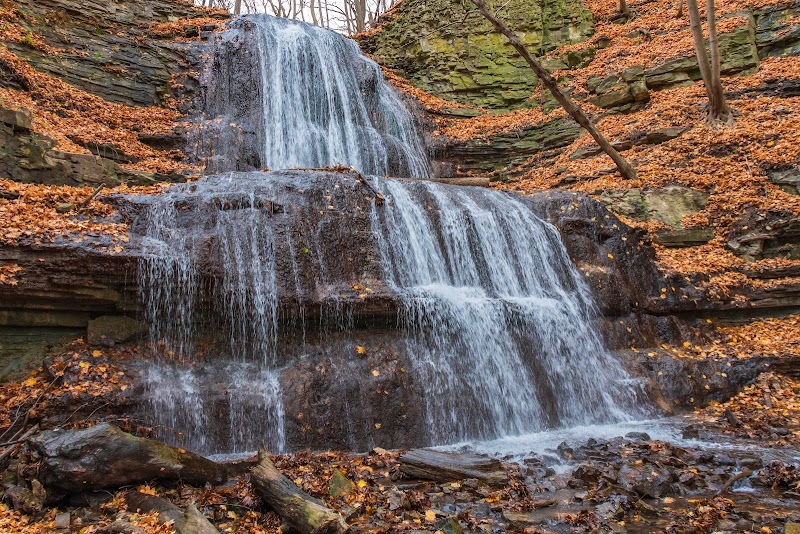
Experience the rugged charm of Hamilton’s waterfalls, where urban edges give way to rushing water and forest trails. This guide offers a thorough look at trail distances, terrain, and seasonal tips to prepare you for the unique adventure lurking just beyond the city.
Choose Appropriate Footwear
Trails are often wet and rocky; wear hiking boots with good traction to prevent slips on moss-covered surfaces and uneven terrain.
Pack Enough Water
Trail effort and humidity can dehydrate you faster than expected. Carry at least 1.5 liters per person, especially in warmer months.
Start Early to Avoid Crowds
Popular waterfalls like Albion and Webster attract visitors midday. Early mornings offer solitude and better light for photography.
Respect Trail Boundaries
Cliffs and drop-offs line some sections. Stay on marked trails and observe warning signs for your safety.
Hamilton Waterfall Walks: Exploring Nature’s Flow in Ontario’s Urban Wilderness
Hamilton, Ontario, stakes its claim as Canada's Waterfall Capital, where more than 100 cascades dare adventurers to explore rocky slopes and forested trails that thread through the heart of the city’s edge. The Hamilton Waterfall Walks are not a singular hike but a network of paths spanning the Niagara Escarpment, a rugged geological spine that pushes against the urban landscape with relentless energy.
Start your journey at one of the well-known parks like Albion Falls or Webster’s Falls. Each waterfall carries its own character—the water at Albion tumbles in robust sheets across stepped rock faces, while Webster's flows with a theatrical elegance, framed by tall hardwoods that catch the light just right in late afternoon.
The walk options range from short strolls to moderate loops, typically between 4 to 8 kilometers, with elevation changes that vary from gentle inclines to steeper descents that require careful footing. Terrain here alternates between packed dirt, scattered stone, and narrow cliffside paths bordered by moss and ferns, inviting you to move deliberately—nature’s fierce edge demands respect.
Underfoot, the trails pulse with the rustle of dry leaves or the occasional splash of water seeping from hidden crevices. Around you, the forest breathes, whispering through wind-thrown branches and the constant murmur of water racing downstream. Time your hike for spring or early summer when streams roar with meltwater, or fall for fiery foliage that contrasts sharply with the pure white cascades.
To prepare, wear sturdy hiking boots with tread sufficient for slick rocks and mud. Bring at least 1.5 liters of water per person; the exertion and humidity can sneak up on you, especially on warmer days. Start early to avoid crowds and take full advantage of soft morning light that captures the sparkle of spray in the air.
Safety is key: some paths border sudden drops, so stay on marked trails and keep a steady pace. Consider trekking poles for added stability where the terrain grows steep. The escarpment’s geology invites curiosity but offers no shortcuts.
Every corner here reveals a new flow, a fresh rhythm—the waterfalls are always moving, creating an endless dialogue between rock and water. This isn’t a place to conquer but to engage with, a wild pulse alive close to city life yet fiercely itself. Hamilton’s waterfalls don’t just fall, they challenge and refresh, pulling you into their untamed current.
Nearby Trips
All Adventures
Boat Charters
Water Activities
Adventures near Hamilton, Ontario
Discover the unique and memorable adventures that make Hamilton, Ontario special.
Frequently Asked Questions
Are dogs allowed on the Hamilton Waterfall trails?
Yes, dogs are permitted but must be kept on a leash at all times to protect wildlife and other hikers. Some areas near waterfalls can be slippery, so keep a close eye on your pet.
Is parking available near the main waterfalls?
Most popular sites like Albion Falls and Webster’s Falls feature nearby parking lots, but these can fill quickly on weekends and holidays. Arriving early is recommended to secure a spot.
Can the waterfalls be accessed year-round?
Yes, though winter access requires caution due to ice. Trails remain open with proper gear, but some paths may be closed during severe weather or maintenance.
Are there guided tours available for these walks?
Several local outdoor groups and tourism operators offer guided waterfall tours providing historical context, safety guidance, and ecological education.
What wildlife might I see on these trails?
Expect to encounter common forest animals like white-tailed deer, red squirrels, and various songbirds. Keep an eye out for shy amphibians near the streams and small mammals rustling in leaves.
Are the trails wheelchair or stroller accessible?
Most waterfall paths include uneven terrain, stairs, and rocky sections, making them challenging for wheelchairs or strollers. However, some parks offer viewing platforms accessible via paved paths.
Recommended Gear
Hiking Boots
Provides grip and ankle support on uneven, slippery paths.
Water Bottle (at least 1.5L)
Necessary to stay hydrated during the exertion and heat.
Trekking Poles
Adds stability on steep descents and uneven terrain.
Waterproof Jacket
Protects from rain and wind common on the escarpment trails.
Local Insights
Hidden Gems
- "The lesser-known Buttermilk Falls offer a quieter experience with a charming cascade in Dundas Valley."
- "The Eramosa Karst Conservation Area nearby hides fascinating caves and sinkholes often missed by casual hikers."
Wildlife
- "Look for the elusive pileated woodpecker tapping in old-growth forest sections."
- "Spring frogs and salamanders populate the wetland areas around the escarpment base."
History
"Many waterfalls served as power sources for early mills in the 19th century, shaping local industry and settlement patterns around Hamilton’s escarpment."
